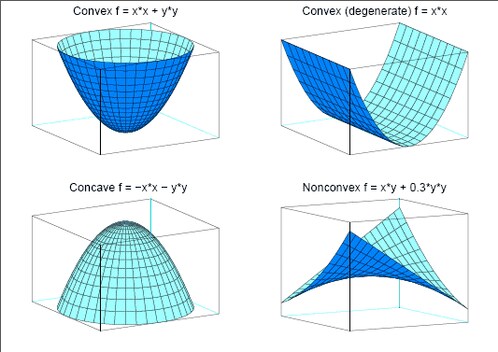The Quadratic Programming Solver
The OPTMODEL procedure provides a framework for specifying and solving quadratic programs.
Mathematically, a quadratic programming (QP) problem can be stated as follows:

where
|
|
|
|
is the quadratic (also known as Hessian) matrix |
|
|
|
|
is the constraints matrix |
|
|
|
|
is the vector of decision variables |
|
|
|
|
is the vector of linear objective function coefficients |
|
|
|
|
is the vector of constraints right-hand sides (RHS) |
|
|
|
|
is the vector of lower bounds on the decision variables |
|
|
|
|
is the vector of upper bounds on the decision variables |
The quadratic matrix ![]() is assumed to be symmetric; that is,
is assumed to be symmetric; that is,
Indeed, it is easy to show that even if ![]() , then the simple modification
, then the simple modification
produces an equivalent formulation ![]() hence symmetry is assumed. When you specify a quadratic matrix, it suffices to list only lower triangular coefficients.
hence symmetry is assumed. When you specify a quadratic matrix, it suffices to list only lower triangular coefficients.
In addition to being symmetric, ![]() is also required to be positive semidefinite for minimization type of models:
is also required to be positive semidefinite for minimization type of models:
![]() is required to be negative semidefinite for maximization type of models. Convexity can come as a result of a matrix-matrix
multiplication
is required to be negative semidefinite for maximization type of models. Convexity can come as a result of a matrix-matrix
multiplication
or as a consequence of physical laws, and so on. See Figure 10.1 for examples of convex, concave, and nonconvex objective functions.
The order of constraints is insignificant. Some or all components of ![]() or
or ![]() (lower and upper bounds, respectively) can be omitted.
(lower and upper bounds, respectively) can be omitted.

